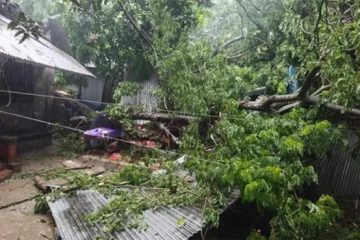Over 10 lakh to appear as exams start tomorrow
Suranjith Deabnath
Over 42 percent registered candidates for SSC and equivalent certificates dropped out this year even before the examinations begin tomorrow, due to a plethora of social and financial obstacles.
About 5.34 lakh of a total 12.67 lakh high school students who had registered in 2007 while they had been in class IX under the country’s 10 education boards, as regular candidates for this year’s secondary school certificate (SSC) and equivalent examinations, ended up failing to fill the examination forms, according to the data of Combined Education Board Computer Centre.
The data also show that about 7.33 lakh regular students will take the exams this year under the eight general education boards, one madrasa board, and one technical education board while the number of irregular examinees is 3.3 lakh.
The Secondary and Higher Secondary Education Board of Dhaka identified some social and financial reasons for such a high rate of dropout which include parents’ financial inability to pay the examination fees, registered students’ failure to get promoted to class X from class IX on time, inability of many students to pass the qualifying tests in their schools, getting married in cases of many female dropouts, false registrations, switching to technical professional courses by many students, departure from the county by many, many being forced to take up earning jobs due to financial problems in families, some getting too involved in politics giving up school altogether, and general carelessness of some others.
Around 47 percent of the dropouts are female students while 37 percent are male.
Blaming early marriage as the reason for high dropout rate among female students, academicians said mass awareness about the importance of female education still has a long way to go.
Besides, most of the renowned schools did not allow students who failed in qualifying tests, especially in English and mathematics, to fill up the examination forms.
“Most of the well known schools in the cities followed that rule of thumb to maintain the reputation of having high passing rates, and the trend is spreading among rural high schools too,” said Prof Akbar Hossai, exam controller of the Dhaka board.
One of the main causes of the high dropout rate is families’ financial inability to bear their children’s educational expenses, a study by the Dhaka board claims.
Many parents are forced to send their children to earning jobs, so they can contribute financially to the family in the age of ever increasing living cost, according to academicians, some of whom added that the situation has been especially dismal over the last couple of years due to incessant inflation and stagnant earnings.
They also observed that most families of the low income group of the population were forced to cut down spending on their children’s education due to skyrocketing prices of essentials, leading to many of the candidates from those families not being ready for the exams when the time came for filling the examination forms, while many others simply did not have the money to pay the fees.
The experts said education has completely become a commodity nowadays needing tremendous amount of investment from parents to educate their children, while the purchasing power of the people is ever declining.
They also said most schools in rural areas do not even have adequate number of qualified teachers to prepare the students for the exams, especially for English and maths, which the students fail the most.
“To do well in English and maths, students now must get private lessons from tutors, but most families in rural areas can’t afford that,” a high school teacher told The Daily Star.
“Students now must depend on private lessons from hired teachers, because the schools have failed to provide education, resulting in high dropout rate in poor families, especially of rural areas,” said former Jahangirnagar University vice-chancellor Dr Zillur Rahman Siddique.
Education Watch Report 2007, published recently by Campaign for Popular Education (CAMPE), says that 86 percent of high school level students buy private coaching, each spending Tk 2,775 on an average per year, while 96 percent students of secondary level government schools depend on private coaching.
“We are looking into the problem and planning to address it by first taking pilot projects where some specific areas of concentrated low income population will be targeted for implementation of measures to curb the dropout rate,” said Education Minister Nurul Islam Nahid.
Dhaka Board Chairman Prof MD Shamsul Hoque said, “We are preparing a report incorporating our findings regarding the reasons for the high dropout rate and our recommendations for ameliorating the situation. We will submit the report to the education ministry soon.”
The dropout rate under Sylhet education board is the highest with a figure of 57.25, while Rajshahi board has the lowest with 32.76 percent, according to the education board data.
In Dhaka board, 1.31 lakh students out of a total of 2.96 lakh, dropped out this year.
SSC, EQUIVALENT EXAMINATIONS 2009
Under Dhaka, Rajshahi, Comilla, Jessore, Chittagong, Barisal, Sylhet, Dinajpur, Madrasa, and Technical education boards, 10,63,484 regular and irregular students will take the SSC and equivalent exams in 1,888 centres within the country, while seven more centres are also set up in foreign countries for expatriate examinees.
The number of candidates for SSC and equivalent certificates is 50,183 more than last year’s.
The highest number of examinees are under the Dhaka board which is 2,40,198, while the lowest number is 37,544 under the Sylhet board.
Around 8.01 lakh students of 15,216 high schools will take the SSC exams under eight general education boards, 1.86 lakh students of 9,424 madras will take the equivalent Dakhil examinations, and 75,057 students of 1,599 technical institutes will take the vocational SSC exams.
Courtesy: thedailystar.net




















